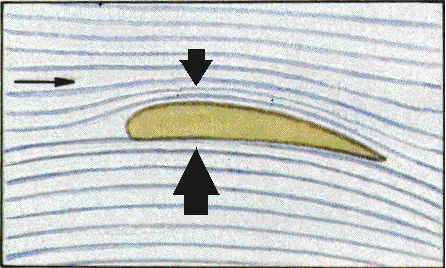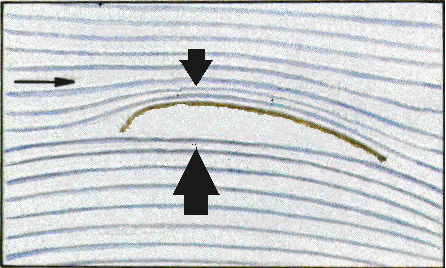

Aerodynamics of Airfoils


Aerodynamics of Airfoils
A curved surface presented to an airstream (arrow) acts as an airfoil because of the difference in airflow above and below the object. Airflow moving over the longer curve of the upper surface must move more rapidly to arrive at the trailing edge at the same time as airflow moving on the shorter straight path below the wing. Since rapidly moving air exerts less lateral pressure, airflow above the wing exerts less downward pressure than the slowly moving air below the wing exerts in the upward direction, and the differential gives a resultant vector, called lift, directed upwards.
Airplane and bird wings are typically thick airfoils (left) whereas bat wings are typically thin, cambered plates (right). Note that the point to point distance between the leading and trailing wing edges in both airfoil types is the same.